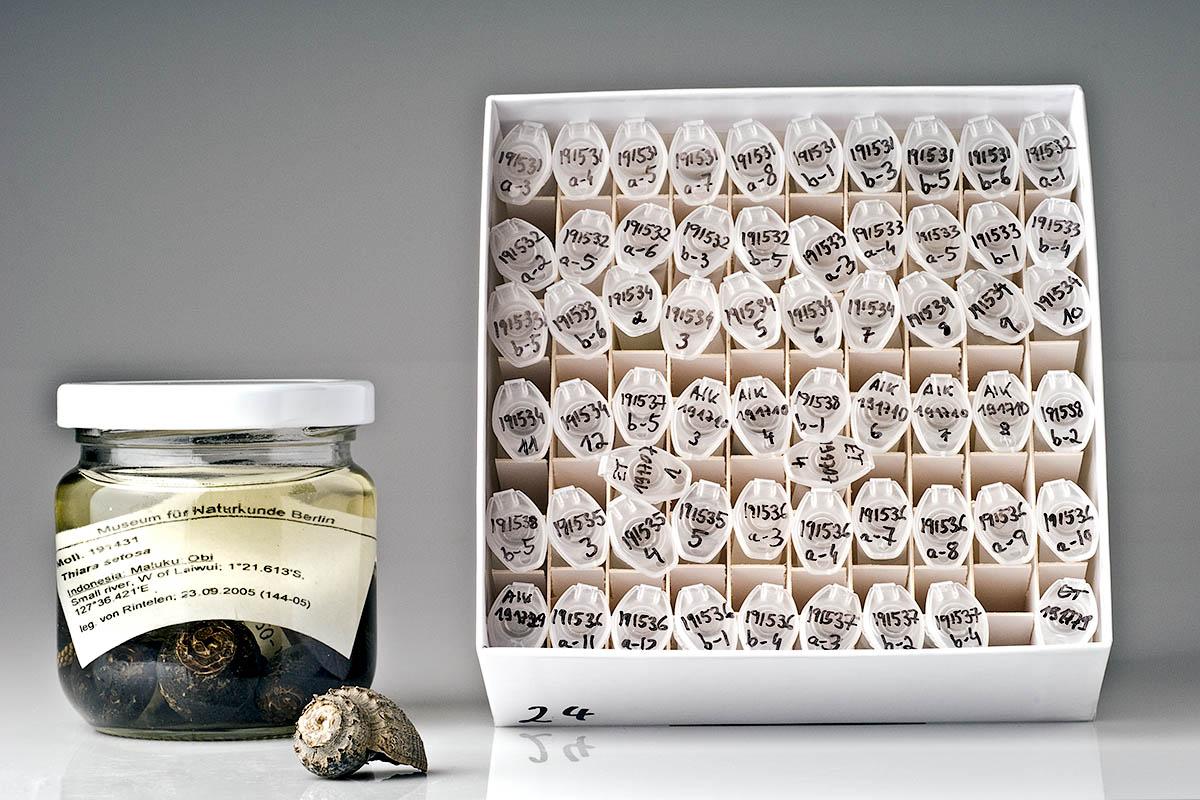Molecular genetic research has been going on at the Museum für Naturkunde for over 30 years and the DNA collection comprises over 30,000 samples from species throughout the animal kingdom. The largest sub-collections containing over 5,000 specimens each are Vertebrates (mainly amphibians and mammals) and Molluscs and Arthropods (mainly insects, but also crabs). Compared to dry and wet specimens, tissue and DNA specimens require technically more sophisticated storage at temperatures between -20 to - 80 °C. Sometimes, liquid nitrogen (-196 °C) is used for cooling. Three deep freezers are currently available for long-term storage of the DNA material at -80 °C, while the inclusion of the specimens in a database ensures that the material is instantly available for international research. The DNA collection is complemented by a DNA collection comprising 3,000 specimens, which is stored at between -20 and -30 °C.
Digitisation
The Museum für Naturkunde Berlin contributes to the Project Global Genome Biodiversity Network Portal (GGBN) and part of the DNA collection is available to this Database. Over 50 % of the mollusc DNA collection is already accessible on GGBN. Another 45,000 samples will follow; data of frogs, bats and grasshoppers, as well as circa one thousand samples of crustacean and brachiopods.
History
For over two centuries, most biodiversity research was done by studying morphological characteristics in preserved organisms. First attempts were made in the 1960s to make direct use of molecular genetic information – first by analysing proteins, especially those known as allozymes or alloenzymes. Then, in 1990, the decoding of DNA sequences became a standard method in systematics and evolutionary research.
This often required the collection of fresh material and thus the need to add two components to the conventional collections – tissue collections from which DNA could be extracted at a later day and the actual DNA collections. The technological requirements for these collections are much more sophisticated than for conventional dry or wet specimens.
In 2006, a cold archive was established at the Museum für Naturkunde. Tissue specimens are stored in 96 % ethanol at -20 °C in order to use them for future DNA analysis. Storing these specimens ultimately means creating an archive of genetic material for molecular genetic analysis. The material becomes part of a gene bank that will no longer be only virtual.
Research
The continuous refinement of DNA isolation methods and high throughput sequencing are improving the possibilities to analyze DNA of very old specimen. These techniques enable the analysis of historical museum collections and thus allow us to time-travel into their genetic past. To further develop and use these promising technologies efficiently the Naturkundemuseum was one of the founding members of the Berlin Center for Genomics in Biodiversity Research (BeGenDiv). The BeGenDiv was formed together with five other institutions of the Berlin/Brandenburg area (IZW, IGB, BGBM, FU Berlin, University of Potsdam). The center provides state-of-the-art laboratory and bioinformatics facilities to all consortium members. It advances biodiversity science through research and education in genomics and bioinformatics. Furthermore BeGenDiv serves as a forum for the exchange of knowledge through seminars and an annual Genomics Symposium. In addition it also functions as a nucleus for collaborative research.
